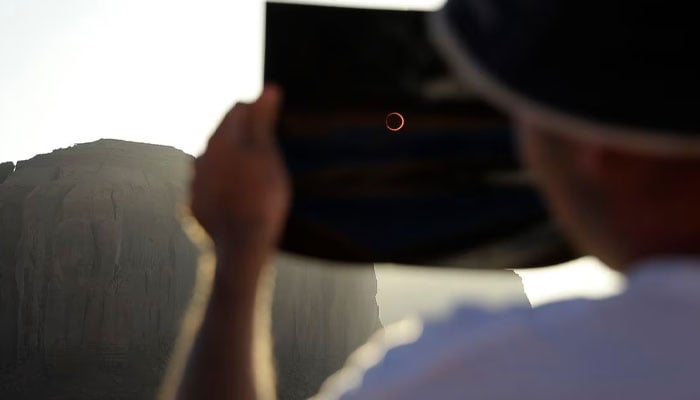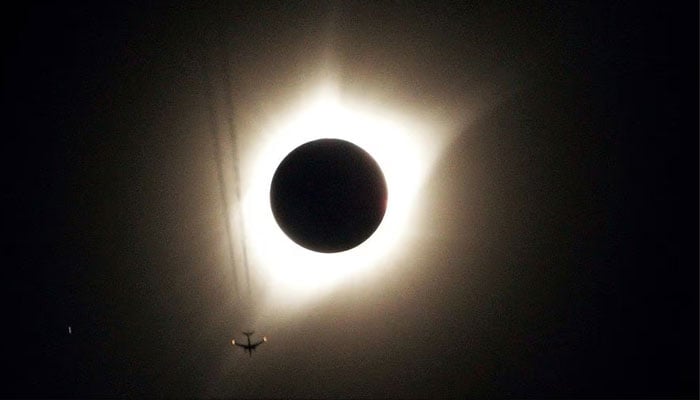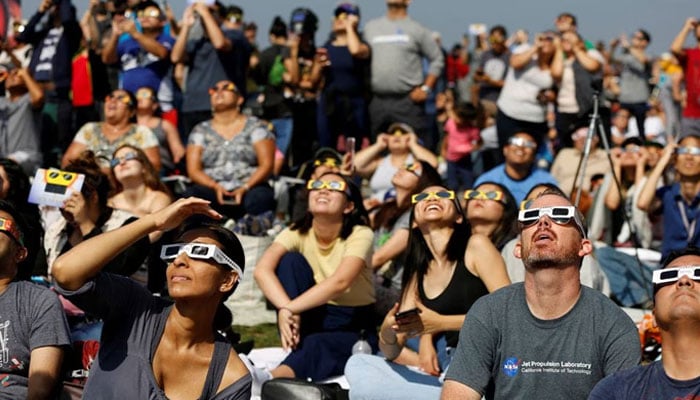Rare 'Ring of fire' solar eclipse to dazzle these 7 US states in October
Starting at 9:13 am in Oregon, the eclipse's path will traverse several states in United States
September 22, 2023

A remarkable celestial event - the annular solar eclipse - is set to grace the skies on October 14, and NASA has provided details on where this awe-inspiring phenomenon will be most visible.
Starting at 9:13 am PDT (12:13 pm EDT/1613 GMT) in Oregon, the eclipse's path will traverse several states in the United States, including California, Nevada, Utah, Arizona, New Mexico, and Texas.
Crossing into Mexico, Central America, and South America, it will conclude its journey at sunset in the Atlantic Ocean. While the maximum obscuring of the sun will occur along this path, a larger part of the Americas will still witness a captivating celestial show.
Size matters: Earth, moon, and sun in perspective
The moon's role in the annular solar eclipse is to nearly cover the sun when viewed from Earth. However, this striking effect is due to the moon's proximity rather than its size.

In reality, the moon is significantly smaller than the sun. The moon boasts a diameter of 2,159 miles (3,476 km), whereas the sun's vast expanse stretches to approximately 865,000 miles (1.4 million km).
Earth, our home planet, has a diameter of 7,918 miles (12,742 km). The visual spectacle of the eclipse arises from the moon's nearness to Earth.
Safety first: Protecting your eyes during an eclipse
While an annular solar eclipse presents a stunning sight, viewing it without proper protection can result in serious eye injury. Experts strongly caution against gazing directly at the bright sun without specialised eye protection designed for solar viewing.
Unlike total solar eclipses, annular eclipses never completely obscure the sun, making it perpetually unsafe to view with the naked eye. Even using camera lenses, binoculars, or telescopes without dedicated solar filters can lead to severe eye damage.

To enjoy the eclipse safely, experts recommend using approved solar viewing glasses or a secure handheld solar viewer, emphasising that regular sunglasses are not suitable for solar observation.
Distinguishing solar eclipses from lunar eclipses
Solar eclipses and lunar eclipses are distinct celestial events. Lunar eclipses occur when Earth positions itself between the moon and the sun, casting a shadow on the lunar surface.
This causes the moon to appear dim and, at times, with a reddish hue when viewed from Earth. Notably, lunar eclipses are observable from roughly half of Earth, covering a significantly wider area compared to solar eclipses.









